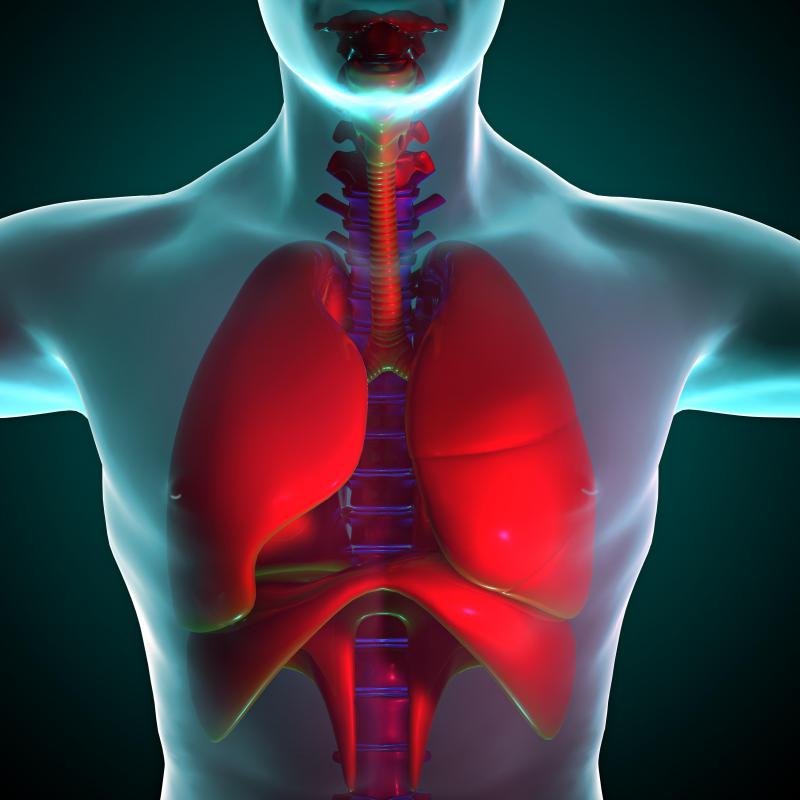At WiseGEEK, we're committed to delivering accurate, trustworthy information. Our expert-authored content is rigorously fact-checked and sourced from credible authorities. Discover how we uphold the highest standards in providing you with reliable knowledge.
What is a Simple Epithelium?
A simple epithelium is a single layer of cells in the bodies of humans and most animals. Both internal and external body surfaces are covered in cell layers of varying thicknesses, and these layers generally are known as epithelia. A specifically simple layer is notable because it is just one cell thick. There are usually four main cell types that can make up this sort of single layer, namely squamous, cuboidal, columnar, and pseudostratified. Each tends to have a slightly different function and be located in a different part of the body. No matter where they are, though, cells that come together in this sort of formation usually work in similar ways. They are important when it comes to filtration, for instance, and are also good at reducing friction in places that tend to experience a lot of movement.
Cell Layering Basics

On a molecular level, almost everything in the human body — and in the bodies of most animals, too, for that matter — are made up of cells of varying sizes and compositions. How these cells are arranged and grouped can say a lot about how they function. In the case of single epithelia, cells join together side by side but not on top of each other. Practically speaking, this means that each cell touches both whatever membrane or surface is below it as well as whatever surface is above it.
Main Function and Purpose

There are a couple of instances in which a single-cell set up is desirable, including situations where fluids need to quickly filter or absorb from place to place. Fluids that penetrate the cell wall on one side don’t have far to go to get out on the other, and in these scenarios the cell can act as a sort of gatekeeper. The single-layer cell structure also yields well to the secretion of fluids that lubricate tissues in order to minimize friction. It also lines body tracts as secretory cells, which release stored chemicals, and as absorptive cells, which are efficient in absorbing substances.

Some of the other functions of simple epithelia include the lining of blood vessels and in goblet cells, which secrete mucin that dissolves in water to form mucus. The mucous layer formed entraps microbes, dust and debris into the tract. Secretion of the mucus can be stimulated by smoke, dust or other particles in the air. A lot of the cells’ specific function depends on what type of cell they are to begin with.
Squamous Epithelium

A simple squamous epithelium is a single layer of flat cells whose appearance is similar to thin, flat plates. Cells in this category are often permeable and are found most often where microscopic molecules pass through membranes via diffusion or filtration. Simple squamous epithelia are found in capillaries; in alveoli of the lungs, where gas exchange occurs; and in kidney glomerulus, where urine begins to form.
Cuboidal and Columnar Epithelia
Simple cuboidal epithelium is found in a single layer of cubelike cells. Cuboidal cells have a spherical nucleus in the center. These cells undertake complex functions such as absorption or secretion. Simple cuboidal epithelia are found in the secretory portions of the endocrine and exocrine glands as well as in the collecting ducts or tubules of the kidney.
As their name suggests, simple columnar epithelia are made up of a single layer of columnar cells that are elongated and column-shaped, resembling skin cells. Simple columnar epithelia undertake absorption or secretion and are found in the lining most organs of the digestive tract, including the stomach, small intestine, and large intestine. Other regions of the body where simple columnar epithelia are found include the upper respiratory tract, the uterus, and the central part of the spinal cord.
Pseudostratified Layers
Pseudostratified epithelium is made up of simple columnar epithelial cells arranged in a single layer. The term "pseudostratified" is used because the cross-section of the cells falsely resembles more than one layer of cells; layers that are much thicker are usually referred to as “stratified.” Psuedostratified epithelia are involved in absorption or secretion. It is not uncommon to find simple epithelium of this type in the upper airways, namely the nose and bronchi, as well as in the uterus and fallopian tubes of females.
AS FEATURED ON:
AS FEATURED ON:














Discuss this Article
Post your comments